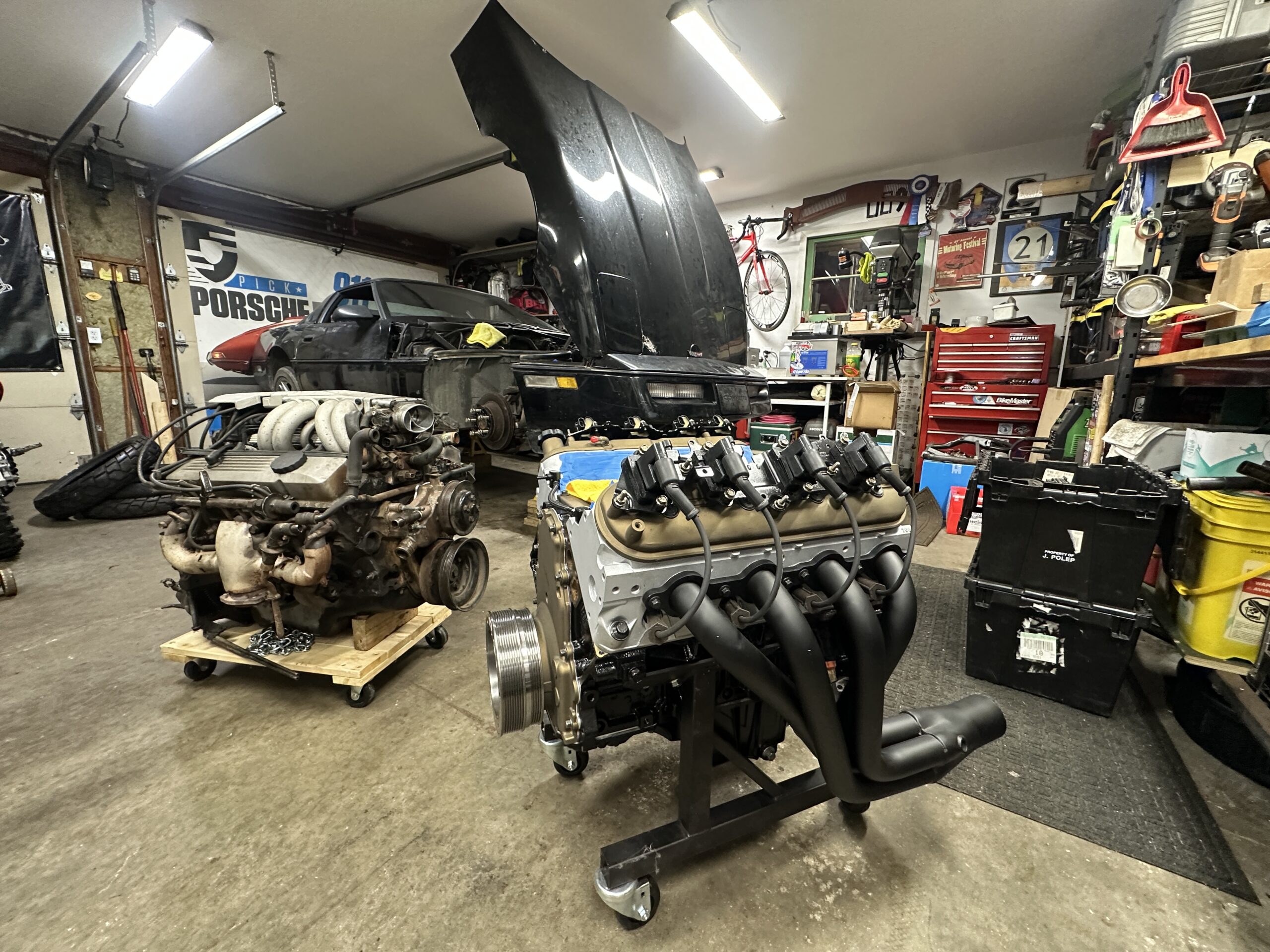One of the greatest things about my 2.5-car garage is also its most dangerous: just enough space to tuck things off into corners where they can safely sit for weeks, months, even years without really affecting other projects or my day-to-day life.
Case in point lately has been my 1985 Corvette LS-swap project. I bought the car about a year ago and immediately dove into a flurry of activity and fun progress—flushing the brakes, swapping out wheels and tires, and installing a new water pump and alternator. I told everyone I knew that I’d be pulling the stock V-8 in two weeks.
Every two weeks, someone would ask how it was going, and I would say, “Oh, I should be ready to pull that in a couple weeks.” I kicked the can down the road 25 times, leaving me with a project car that was no longer a project and more of just a driver.
On one hand, I was excited about the initial project and, with motivation running high, set some ambitious deadlines. But every time I reset the clock, something kept me from reaching for the wrenches. I found other distractions and took up other projects rather than actually get started on the Corvette.
Yes, I sourced a handful of large parts and even spent a few weeks putting together the core of the 6-liter V-8, sourced from a late-model GMC Yukon. Yet every time the next job on my to-do list was “Disassemble Corvette,” I stalled.
My brain was struggling with the fact that any real progress would require taking a running, driving, very functional, vintage Corvette and making it… not that. A car that drove into my garage, idling strong with even compression, was going to become a shell.
Of course, it would be built back up stronger than ever, but shouldn’t I have started with something worse? A car that didn’t run would be a great candidate for a swap, since then I would not be removing any cars from the road; I would be bringing one back. Leaving more Corvettes in drivable condition is a good thing, right?
All my other projects, I intentionally start with what my close friends call “parts vehicles.” I like to save something that someone else left for dead. This Corvette was not left for dead, though. Its previous owner decided it was more than he wanted to deal with, but the car came back to life with minimal effort and has been working surprisingly well for a whole year of regular driving—nearly 1,200 miles, to be exact.
That’s not exactly a lot, except for a guy who owns three cars, a van, and eight motorcycles, and works from home in a part of Michigan where the driving season lasts about 10 weeks. I did nothing more than catch up on long-deferred maintenance items before flogging the car for a year, and it never left me stranded.
Naturally, I feel some guilt in starting a heart transplant on an otherwise healthy patient. But I’m not a doctor, and the Hippocratic oath does not apply to small-block Chevys. It’s just a car.
And in the grand scheme of Corvettes, a 1985 Z51 coupe with 120,000 miles is not that rare or otherwise notable.
While wrestling with the Tuned Port Injection-equipped V-8, I realized that taking apart a good car has interesting ripple effects. Before the Corvette even came off the trailer, I had lined up a buyer who planned to re-home the tired but healthy small-block into a third-gen Camaro that had been parked for some time due to engine troubles.
If you’ve got a project that could use a working Doug Nash 4+3 transmission, drop a comment below! These are good parts, and because I know they worked prior to my pulling the car apart, they have real value beyond just core prices—unlike most of the parts I take off my projects, which are scrap metal more often than not.
This situation forces me to reflect on the old saying about starting with the best car you can afford. For a restoration, this always made sense to me. But for a car I intended to extensively modify? Now I see that investing in a nicer starting point is not only about saving me work, but it can also be about saving other cars by freeing up parts that otherwise wouldn’t enter the market until long past their lifespan.
So my math is wrong.
I’m not taking this Corvette off the road, not really. I’m removing it from the road temporarily, and the engine I take out will put another car back on the road. Maybe the transmission can do the same.
If so, that puts me at a functional vehicle count of +2, which is far better than I’ve ever done, in my personal project-car math.
Correcting my formula helped me stride right over the mental stumbling block, and after a weekend of lying under and over the top of the Corvette, all that’s left is the actual difficult parts of the swap—the stuff I’ve been looking forward to.
Up first: a lot of cleaning.
https://www.hagerty.com/media/opinion/mechanical-sympathy/i-almost-couldnt-cut-the-v-8-heart-out-of-my-corvette/



